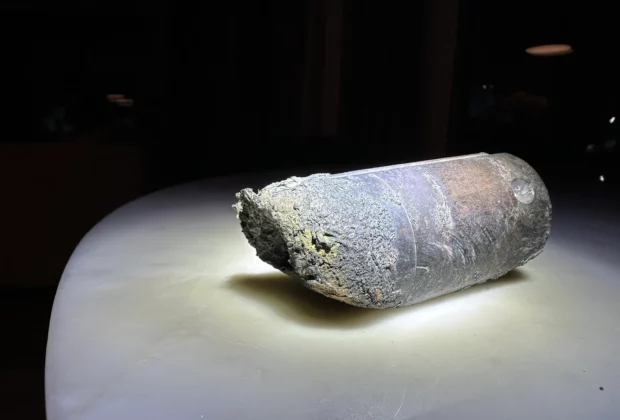NASA has verified that the enigmatic object that fell through the roof of a Florida home last month originated from the International Space Station (ISS).
Alejandro Otero owns that house in Naples, a city by the sea. Otero stated shortly after the occurrence on March 8 that he believed the object in question was a piece of a pallet of cargo that contained 5,800 pounds (2,630 kg) of old batteries that were thrown off of the International Space Station in March 2021.
According to a recent NASA investigation of the item conducted at Florida’s Kennedy Space Center, he was correct.
Agency officials released an update today (April 15) saying, “Based on the examination, the agency determined the debris to be a stanchion from the NASA flight support equipment used to mount the batteries on the cargo pallet.”
They also mentioned that the cylindrical piece of space trash is composed of a metallic alloy known as Inconel. It is 4 inches (10 centimeters) high by 1.6 inches (4 cm) wide, weighing 1.6 pounds (0.7 kg).
After new lithium-ion batteries were sent to the International Space Station (ISS) to replace its power source, the nickel-hydride batteries were discarded. According to NASA officials in today’s update, the pallet and the batteries were supposed to burn up entirely in Earth’s atmosphere; however, that didn’t happen, and the agency wants to know why.
“The International Space Station will perform a detailed investigation of the jettison and reentry analysis to determine the cause of the debris survival and to update modeling and analysis, as needed,” officials from NASA stated in today’s report.
“NASA specialists use engineering models to estimate how objects heat up and break apart during atmospheric reentry,” they stated. “These models require detailed input parameters and are regularly updated when debris is found to have survived atmospheric reentry to the ground.”
Otero’s experience serves as a helpful reminder that a lot of hardware is developing at a rapid pace.
The European Space Agency estimates that there are around 36,500 space trash fragments that are at least 4 inches (10 cm) wide and 130 million items that are at least 1 millimeter in diameter in Earth’s orbit. Given their extremely high velocities, even these little fragments can be dangerous to satellites and other orbiting assets. For instance, the orbital velocity of the International Space Station (ISS) is around 17,000 mph (27,400 kph) at an average height of 250 miles (400 km).
Furthermore, as evidenced by past events, some of this debris occasionally re-enters Earth. To the dismay of the global space community, for example, China’s formidable Long March 5B rocket’s 23-ton core stages frequently plummet in an uncontrollable manner a week or so after launch.
By the way, Otero and NASA may face financial repercussions as a result of this new investigation.
“I eagerly await communication from the responsible agencies, as their assistance is crucial in resolving the damages from this deliberate release. But more importantly how in the future to arrange the payload so it will burn in its entirety as it reenters,” Otero said via X on March 8, not long after his house was attacked.








